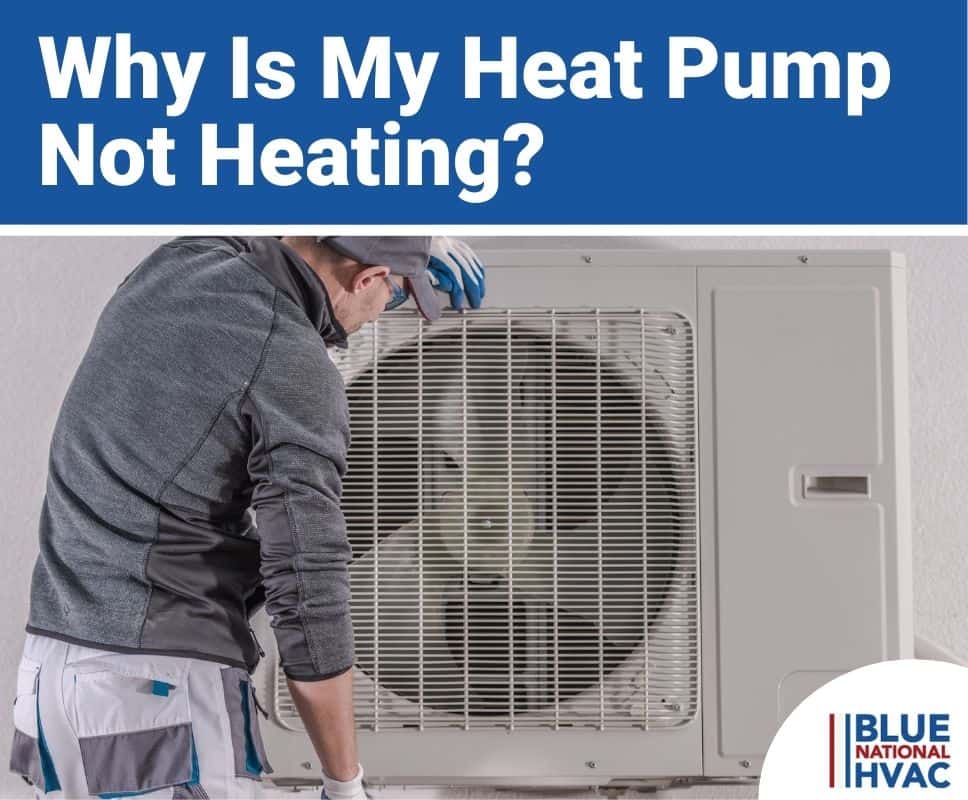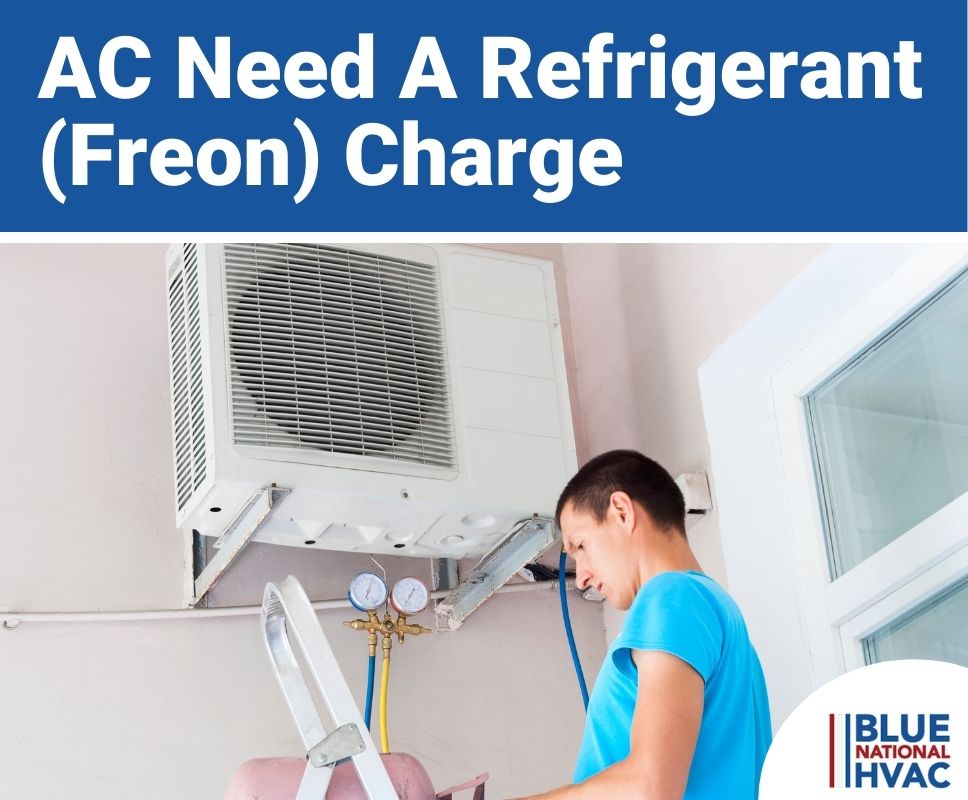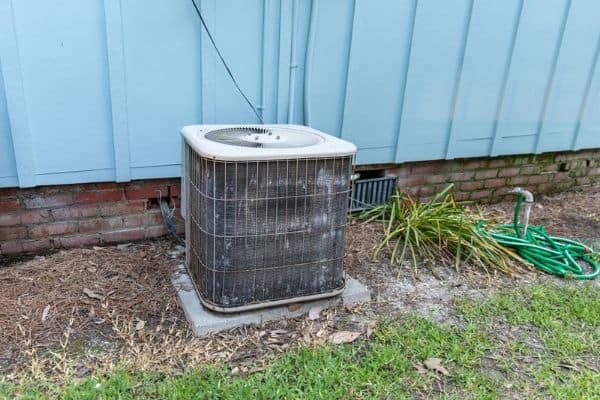How Does A Heat Pump Work?
Residential heat pumps work very similarly to central air conditioners. They are a split system consisting of an indoor and outdoor unit connected with refrigerant lines in a closed loop.
The refrigerant lines contain refrigerant under various pressures and temperatures that flow along the closed-loop like a car on an oval racetrack. As the refrigerant completes each loop, it absorbs heat from the indoors and expels it outdoors or vice versa.
While the refrigerant travels through the closed-loop system, it works in tandem with the following major components:
- Outside Unit (condenser)
- Compressor
- Outdoor coils
- Fan blower
- Indoor Unit (air handler)
- Indoor coils
- Air filter
- Condensate drain pan
- Fan blower
- Emergency heat system (electric heating coils)
- Reversing valve
- Thermal expansion valve
- Refrigerant lines
The Cooling Process
When you set the heat pump to cooling mode, it works exactly the same as an air conditioning system. The compressor moves the cold refrigerant to the indoor coils. Then, the indoor fan blower moves warm indoor air across the chilled coils and transfers heat.
The air becomes cold and flows throughout the home via the ductwork, while the refrigerant warms and flows to the outdoor unit. At the outdoor unit, the heat releases to the outdoors through the outdoor coils and fan.
During this time, the refrigerant also goes through changes in pressure which lowers its temperature before it circles back to the evaporator coils indoors to cool more air, repeating the cycle.
The Heating Process
The heating process essentially works the same as the cooling process, but in reverse. When you switch the heat pump to heat mode, the reversing valve kicks in and causes the refrigerant to flow in the opposite direction.
So, the refrigerant now collects heat from the outside air, and when it reaches the indoor coils, it warms the indoor air.
Some heat pumps also have an “emergency heat” or “auxiliary heat” system built-in. When it is frigid outdoors, most heat pumps lose efficiency and will struggle to keep your home warm. This backup heating system counteracts that by adding heat with electric heating coils.
However, electric heating is expensive, and you should avoid it unless you have no other way to keep your home warm (like space heaters, fireplaces, etc.).
Troubleshooting: What To Check When Your Heat Pump Is Not Heating
If your heat pump is not heating your home, it should be a cause for concern. We provide some troubleshooting tips below that could help you get your heat back up and running.
However, if it is freezing outdoors and you don’t have heat, give us a call right away. We have a 24/7 emergency service and are here to help you in this stressful situation.
Here are the common causes of heat pumps not heating:
You’re Wrong; It Is Heating
Sometimes your heat pump is heating, but it just doesn’t feel like it. Heat pumps tend to blow warm air out of your supply vents between 90ºF to 95ºF. Sure, this sounds warm, but to your 98.6ºF body, it might feel like lukewarm or cold air when you hold your hand in front of it.
In comparison, gas furnaces blow hot air at over 100ºF, which is definitely warmer than your body, unless you’re running a fever.
If your thermostat is reading a temperature at or near the setpoint, then your heat pump is working fine. If it is many degrees lower than your set point, then you were right all along – it isn’t heating.
Wrong Thermostat Setting
Believe it or not, the most common reason heat pumps “fail to heat” is because the homeowner didn’t turn it on in the first place. Your thermostat should have three primary settings:
- Cooling mode or “cool”
- Off
- Heating mode or “heat”
If you want your heat pump to heat your home, double-check that you set the thermostat correctly.
Malfunctioning Thermostat
Your thermostat is the brain of your HVAC system. If something goes haywire, it could prevent your heat pump from turning on.
For example, a component on the thermostat’s circuit board could short out and prevent the call for heating from getting to the heat pump.
In this case, it is usually easiest and more economical to replace the thermostat with a new one to fix the issue.
Blocked Outdoor Unit
The outdoor unit, or condenser, is responsible for adding heat to the refrigerant in heating mode. The condenser does this by extracting heat from the outdoor air and transferring it to the refrigerant in the coils.
If snow, ice, dust, dirt, or other foreign bodies are blocking the condenser, it will not be able to transfer heat efficiently. Therefore, visually check your condenser unit if you’re experiencing heating issues with your heat pump.
If there is a blockage, do your best to clear it.
Low Refrigerant
Consider the refrigerant “the blood” of your heat pump system. But instead of carrying oxygen, it carries heat to the inside of your home. If your heat pump develops a refrigerant leak, its ability to transfer heat will dwindle.
To fix a low refrigerant issue, an EPA-certified HVAC technician has to repair the leak and recharge the system with refrigerant.
Clogged Filter
If your air filter is saturated with dust, dirt, and pet hair, the amount of airflow that can pass through it will be little to none. Obviously, this comprises the heat pump’s ability to transfer warm air to your home via the ductwork.
If your heat pump is not heating, check your air filter. A clogged air filter is the most common issue that prevents heat pumps from adequately warming your home. If the filter is clogged, change it out with a new one.
You should clean your HVAC filter every 3 to 12 months, depending on the indoor air quality in your home and the type of filter.
Stuck Reversing Valve
All heat pumps have a reversing valve. It is the critical component that allows the heat pump to toggle between “cooling” and “heating” modes. It does this by literally reversing the flow direction of the refrigerant within the refrigerant lines, hence its name.
If the reversing valve gets stuck or otherwise fails, it might not be able to change from cooling mode to heating mode. This will prevent your heat pump from heating and will instead start cooling it.
If your reversing valve fails, an EPA-certified HVAC technician will need to replace it. Replacing the reversing valve requires draining the refrigerant and recharging; homeowners should not attempt replacing a reversing valve themselves (unless they are EPA-certified).
Power Disconnect
Another possible reason for heat pumps failing to heat your home is due to power interruptions. Here’s what might be causing the power interruption:
- Tripped circuit breaker
- Blown fuse
- Blown capacitor
- Wire short
- Ground fault
- Faulty relay
Besides a tripped circuit breaker, an HVAC technician should inspect and repair all power failure issues.
What Are Some Maintenance Practices For Heat Pumps?
Maintaining your heat pump is crucial as it staves costly equipment failures, keeps your system running efficiently, and extends your heat pump’s lifespan.
If you don’t perform any maintenance or tune-ups, it isn’t a question of “if” your heat pump will fail; it is a question of “when” it will fail.
Here are common maintenance tasks all homeowners should complete on their heat pumps.
Replace the Air Filter
A clean air filter is essential to the efficient operation of your heat pump. It will keep your heat pump running smoothly, your utility bills low, and will prevent costly repairs associated with equipment stress.
Check your air filter monthly and replace it every 3 to 12 months, or as needed.
Clean the Coils
The indoor coils (aka evaporator coils) can collect dust and dirt if you do not properly maintain the air filter. And just like a dirty air filter, dirty coils can reduce airflow and heat transfer too.
You can easily clean the coils with a shop vacuum with a brush tip attachment. For further instructions, check out our detailed guide on coil cleaning.
Routine Tune-Ups
Routine, scheduled tune-ups with an HVAC technician are the best way to maintain your heat pump. Most homeowners do not have the technical know-how or skills to properly service a heat pump, just like most people don’t know how to change the oil in the car or realign their wheels.
When an experienced HVAC technician services your heat pump, they will inspect it for leaks, oil the blower motor, check the belt, and complete other tasks to ensure your heat pump keeps running smoothly for years to come.
When Is It Time To Call A HVAC Expert?
If you are sitting in your home, chilled to the bone, give our team of HVAC experts a call. You can check your air filter, thermostat setting, and circuit breaker yourself, but if your system continues to heat your home inadequately, you’ll likely need professional heat pump repair.
There’s only so much heat pump troubleshooting homeowners can do on their own.
A heat pump blowing cool air or not providing enough heat in cold weather is absolutely no fun, and we understand the urgency in fixing the issue. That is why we offer service 24 hours, 7 days a week. We don’t want you to suffer in the cold.









